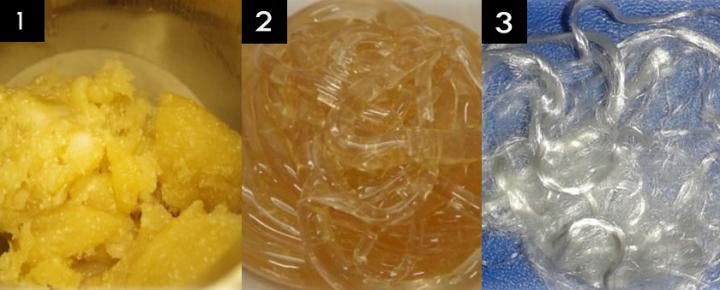Fast fashion is becoming a strain on the environment. Trendy clothing is available for very cheap prices so buyers don’t think twice about buying a cool t-shirt that costs 5$. However, because they are so cheap and trendy, the clothes don’t last very long. Millions of tons of cheap textiles are dumped into landfills every year. The dream is to turn the clothing industry into a closed loop, where the fibers from clothing are recycled and used to create new pieces of clothing. Unfortunately, it hasn’t yet been possible to keep the quality of the fibers and to separate cotton hybrids. In a new breakthrough, a research team at Aalto University in Finland have found a way to separate cotton from polyester and re-spin the new fibers into high-quality material.
Fast fashion
Fast fashion is a big problem with slow solutions. In the US, Americans throw out 12.7 million tonnes (14 million tons) of textiles annually. On average, every person ditches about 36 kg (80 pounds) of clothing a year, according to the Environmental Protection Agency. In the past, people would bring used clothes to second-hand shops, but there is a massive oversupply of clothes so the shops don’t want to take items from fast-fashion chains. Of clothes that are brought to charities, only about 20% are used again and the rest ends up in landfills or is burnt.
Natural fibers decompose like food waste in landfills and produce methane gas. One key difference is that these fibers have been treated with chemicals which can leach into the air and water. On the other hand, synthetic fibers are a type of plastic and take hundreds of years to biodegrade. Either way, it’s not good for the environment or our health!

A closed loop
There aren’t very many clothing recycling programs now. Only 0.1% of clothes collected by charities and take-back campaigns are actually used again in new textile fibers. However, the idea is to create a closed loop. This loop would cause clothes to be used as long as possible and at the end of their life, they would be re-used to make high-value products. Ideally, nothing would make it to the landfills. So far, there have been limitations, such as recycled cotton being low-quality and that it is hard to separate cotton out of synthetic mixes.
People don’t want to buy fewer clothes, and clothing companies don’t want to stop producing as much so the “closed loop” solution is getting support from industry and research is being conducted to step closer to this goal.

“We want to not only recycle garments, but we want to really produce the best possible textiles, so that recycled fibers are even better than native fibers,” says Herbert Sixta, Ph.D., Aalto University.
One step closer
Most fabrics are a blend of cotton and synthetic fibers, like polyester, which makes it hard to separate them. Ionic liquids are known to dissolve cellulose, but ones that were previously tested damaged cotton, making it unusable after treated. In a fateful turn, the research team at Aalto University discovered an ionic liquid (1,5-diazabicyclo[4.3.0]non-5-ene acetate) that dissolves cellulose, making a material that can be spun into fibers. These fibers are stronger than viscose and feel like lyocell (an eco-friendly fiber that is made from wood pulp). They used this ionic liquid on cotton-polyester blends as well. The cotton was dissolved into a cellulose solution while the polyester wasn’t damaged.

“I could filter the polyester out after the cotton had dissolved. Then it was possible without any more processing steps to spin fibers out of the cellulose solution, which could then be used to make clothes,” says Simone Haslinger, Ph.D. candidate, Aalto University.
The team presented their promising results at a meeting of the American Chemical Society. The next step is for them to test if the isolated polyester can be used again. These first findings show that it is possible to break down and re-use fibers, even from cheap clothing. The goal is to make this whole process possible on an industrial scale. To accomplish this goal, the clothing industry also needs to follow through and support upcycling.


